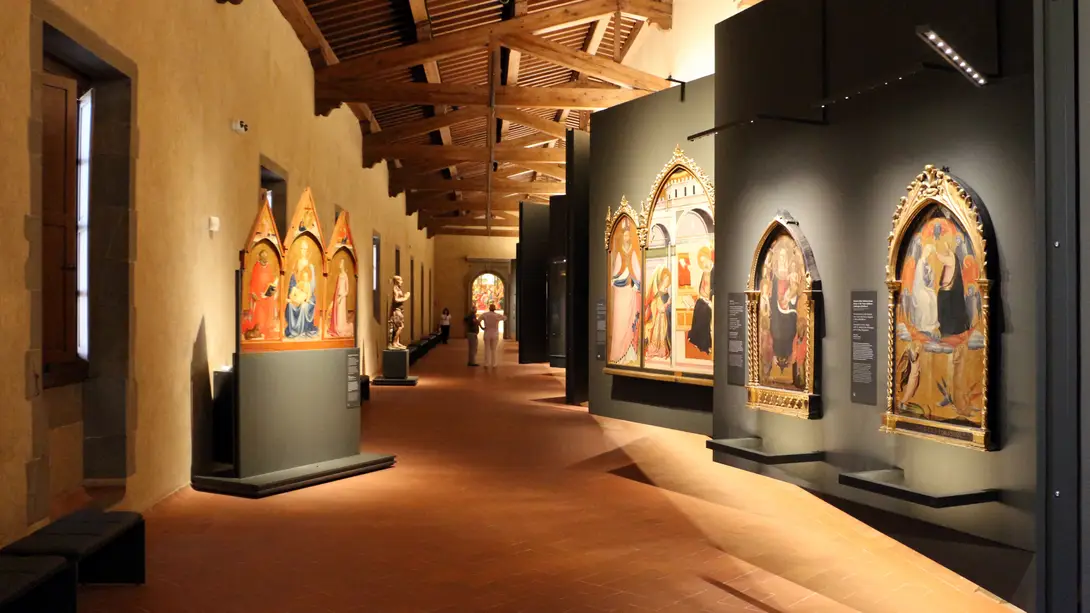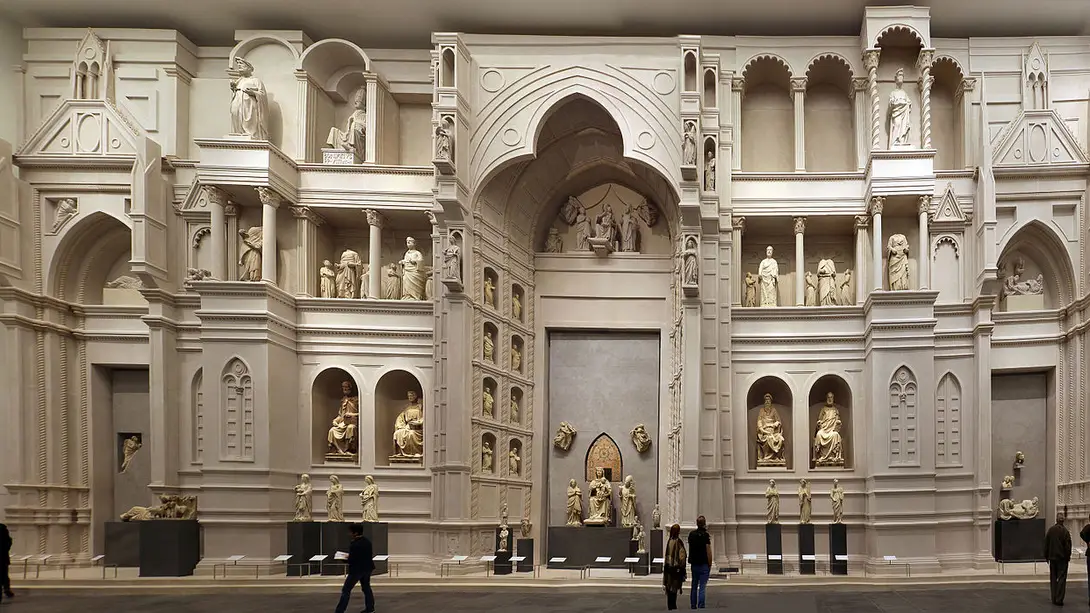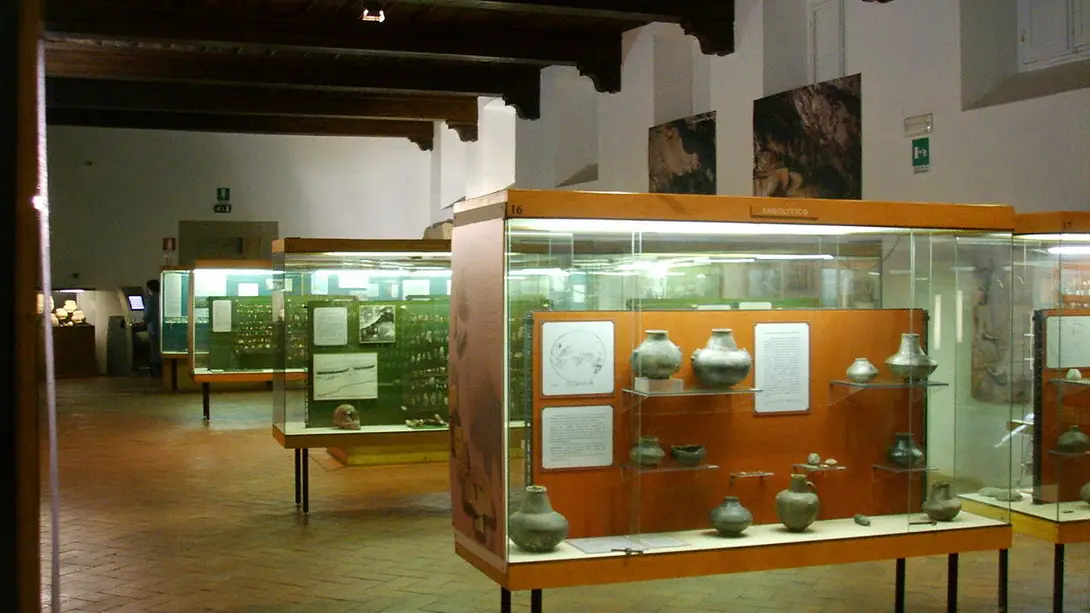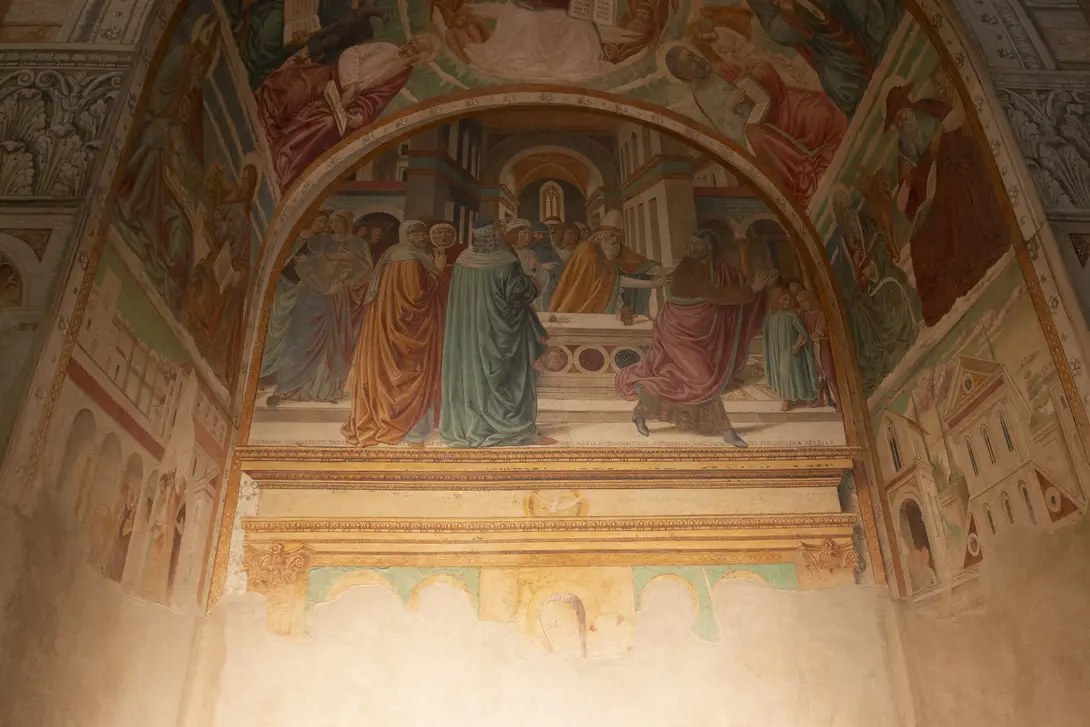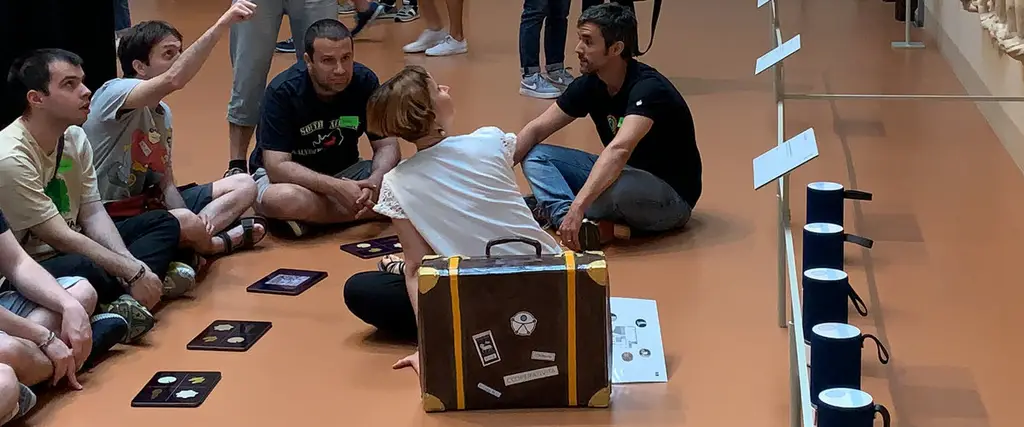
Museums for everyone. Tours for people with intellectual disabilities.
In recent years, Tuscany activated some projects for special publics to give everyone the opportunity to access museums and appreciate works of art. One of these projects is Museo per tutti (Museum for everyone) specifically dedicated to people with intellectual disabilities, which was welcome by the Museo degli Innocenti among the first, and by Benozzo Gozzoli Museum in Castelfiorentino, about 25 miles from Florence.
Another one - called Progetto Welcome (We Encourage Living Collective Open Museums Experiences) - is dedicated to hospitality in museums, inclusion, and accessibility: in this respect Museo Fiorentino di Preistoria has developped special initiatives for people with intellectual disorders.
Nevertheless, other Florentine museums, such as the Uffizi, the Opera del Duomo and Palazzo Strozzi have structured ad-hoc paths.
Comune di Firenze
Useful information
The places
Stages
Museo degli Innocenti
This museum collects the historical and artistic heritage of the ancient Spedale degli Innocenti, a building designed at the beginning of the 15th century byFilippo Brunelleschi, in order to welcome the abandoned children (the "Innocents"), in a complex full of refectories, cloisters and dormitories. The children were called nocentini (which is also a very popular family name in Florence).
The museum is made of two different parts: the Art Gallery houses works of art, especially paintings, made between the 14th and the 18th century, such as an “Adorazione dei Magi” by Domenico Ghirlandaio, a “Madonna col Bambino” attributed to Sandro Botticelli, and glazed terracottas by Luca and Andrea della Robbia; on the façade, terracotta roundels represent children in swaddling clothes, showing themselves to the world.
Another, touching part is the section of the museum dedicated to the memory of the lives of abandoned at the Spedale, and it features babies’ small objects left as a mean of identification, called signs.
The rich collection of documents in the Archive shows the life at the Spedale through the centuries.
The Bottega dei ragazzi (Children Workshop) offers activities for children between 3 and 11 with their families, applying the teaching of the Renaissance workshops: “learning by doing”.
The 13th century terrace hosts the Caffè del Verone, a café with a beautiful view, accessible even without the museum ticket.
The Uffizi Gallery
With its immense artistic legacy, the Uffizi Gallery, now The Uffizi, is one of the most important museums in the world. Following a substantial reorganization in the 17th century, which led to the transfer of some collections (arms, scientific instruments, archaeological finds, ancient and modern bronzes) to other sites and the establishment of new museums, the Uffizi mainly became a picture gallery, with thousands of works ranging from the 13th to the 18th centuries. After the suppression of churches and convents in the 18th and 19th centuries, many works of ecclesiastical provenance swelled the gallery’s collections; other important paintings were acquired at the beginning of the 20th century.
Masterpieces held in the museum include: the large altarpieces of Cimabue and Giotto; 14th-century Sienese art (including a fine Annunciation by Simone Martini); a rich spectrum of 15th-century art from Tuscany and central Italy, with works by Masaccio and Masolino (Madonna and Child with Saint Anne), Filippo Lippi, Botticelli (Birth of Venus and the Primavera), Piero della Francesca (Portraits of Duke Federico da Montefeltro and his Duchess Battista Sforza of Urbino) and Gentile da Fabriano (Adoration of the Magi).
The rooms devoted to 16th-century painting contain works by the masters of the principal Italian schools: from the Adoration of the Magi by Leonardo da Vinci to Michelangelo and Raphael, while Titian, with his Venus of Urbino, Veronese and Tintoretto represent the flowering of painting in the Veneto. Foreign artists are also well represented, with works by Albrecht Dürer, Hans Holbein and El Greco.
The series of 17th-century works opens with Caravaggio’s Bacchus, and features a rich range of work from the major European schools, including Rubens, Van Dyck and the self-portraits by Rembrandt. Finally, Canaletto and Guardi, together with Longhi and Tiepolo, offer a sample of 18th-century art. In addition, the gallery holds ancient sculptures, miniatures and tapestries from the Medici collections. Work is currently underway on the ‘New Uffizi’, which will double the amount of exhibition space, permitting the display of works previously inaccessible to the public.
A map of suggested paths in the gallery - including their duration - is available on the Uffizi Official Website.
Museo dell'Opera del Duomo
The Museo dell'Opera del Duomo houses, for conservation reasons, a whole series of works of art from the Santa Maria del Fiore complex (Cathedral, Baptistery and Bell Tower). A complete refurbishment, inaugurated in 2015, has enhanced the extraordinary collection documenting the history of Florentine sculpture during the building of the Duomo, starting with Arnolfo di Cambio's amazing reconstruction of the ancient façade.
The museum houses some fundamental works of Italian art, such as the Cantorie (choirs' tribunes) by Donatello and Luca della Robbia, which are among the most significant moments of 15th-century sculpture. Other iconic sculptures include Donatello's Penitent Magdalene, a wooden figure of strong realism from the mid 15th century, and Michelangelo's intense ‘Bandini’ Pietà, a masterpiece of the great artist's maturity.
One section is entirely dedicated to the doors of the Baptistery, where the panels of the Gates of Paradise by Lorenzo Ghiberti stand out.
There are also various wooden models of the dome and a series of tools documenting the work of the workers at the time of Brunelleschi's building site. Belonging to the Cathedral Treasury is the Altar of St. John, a masterpiece of 15th-century Florentine goldsmithing, made for the Baptistery.
Palazzo Strozzi
Palazzo Strozzi, with its imposing facades clad in pietra forte, is one of the most significant Renaissance palaces in Florence and a privileged venue for important art exhibitions.
One of the rooms on the ground floor houses a permanent exhibition that tells the story of Palazzo Strozzi. It was built in 1489 on behalf of Filippo Strozzi, one of the wealthiest merchants in Florence, who wanted it larger than Palazzo Medici. The construction remained unfinished when the Strozzi family, rebels against Medici rule, fell into disgrace in the 16th century.
The elegant courtyard, designed by Simone del Pollaiolo, is surrounded by arches resting on columns with Corinthian capitals; it is accessed through imposing portals that open in three directions (Via Tornabuoni, Via Strozzi, Piazza Strozzi).
The palace houses cultural institutions, including the National Institute for Renaissance Studies, but above all the Fondazione Palazzo Strozzi, the heart of cultural activity: in fact, the rooms are always the venue for important art exhibitions. In the spaces of the Centre for Contemporary Culture Strozzina, in the basement of the palace, initiatives dedicated to contemporary art take place.
Museo e Istituto Fiorentino di Preistoria
Occupying the first floor of the historic Convent of the Oblate Nuns, the museum has a rich collection of originalitems and reproductions illustrating the history of the human racefrom the Stone Age through to the Metal Age. The items on display are from Italy, elsewhere in Europe, Asia and Africa.
The museum also has a section specially designedfor nursery school children, who are introduced to the prehistoric and ancient world via exhibits basedonfairy tales and games.
During the year, the museum organizes activities for families with children from 4 years up, guided tours and workshops.
BE GO Benozzo Gozzoli Museum
The Benozzo Gozzoli Museum is located in the lower historic center of Castelfiorentino in via Testaferrata, in the heart of the commercial area and a few steps from the railway station. It houses some important frescoes that the famous Florentine artist created inside two street chapels, and originally covered by simple canopies.
After the detachment from the original sites and two restoration interventions, the frescoes can now be admired in their full splendour inside the museum, where the real dimensions of the tabernacles that once housed them have been duly reproduced: the Tabernacle of Madonna della Tosse, from 1484, and that of the Madonna delle Grazie from 1490-91, also known as of the Visitation.
On the first floor, visitors have access to multimedia stations created in collaboration with the Institute and Museum of the History of Science, through which - thanks to an interactive application - it is possible to explore the frescoes in detail and learn more about their history.
The museum stands out in the Tuscan panorama as a Museum for all; the preparation of works and special interpretations makes Benozzo Gozzoli's artistic heritage accessible to everyone, demonstrating the sensitivity towards art as a vehicle of universal communication.
Photo credit: Riot Design, Marco Lari e Giacomo Salvadori
